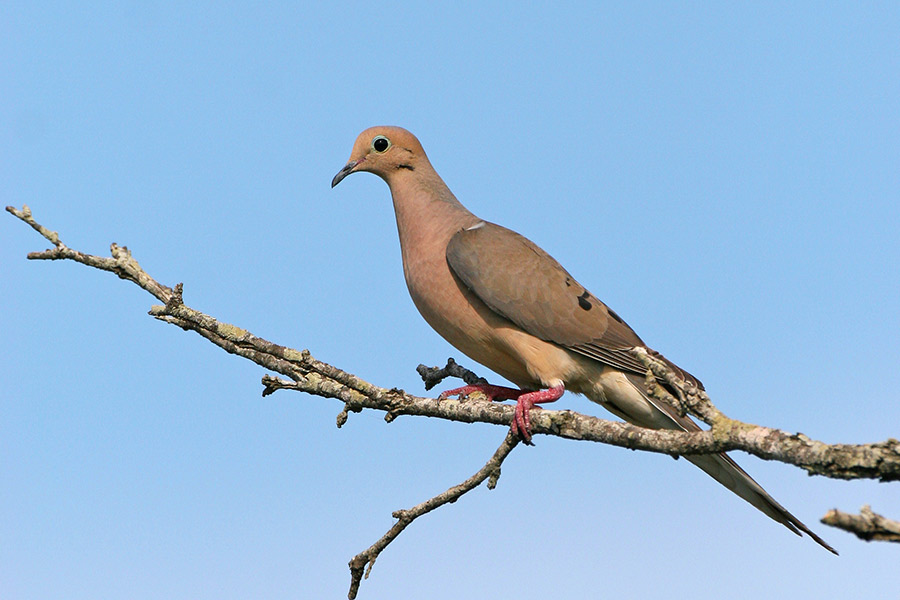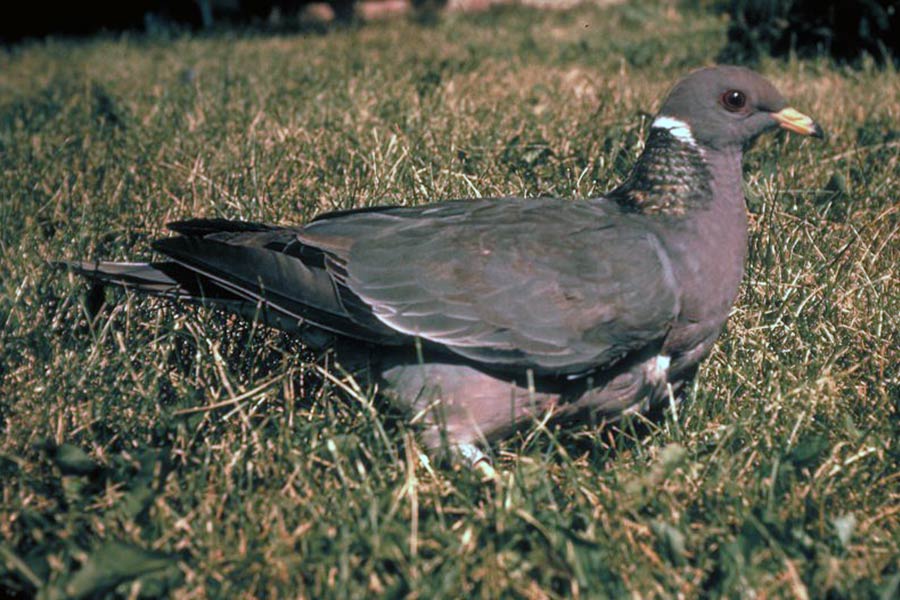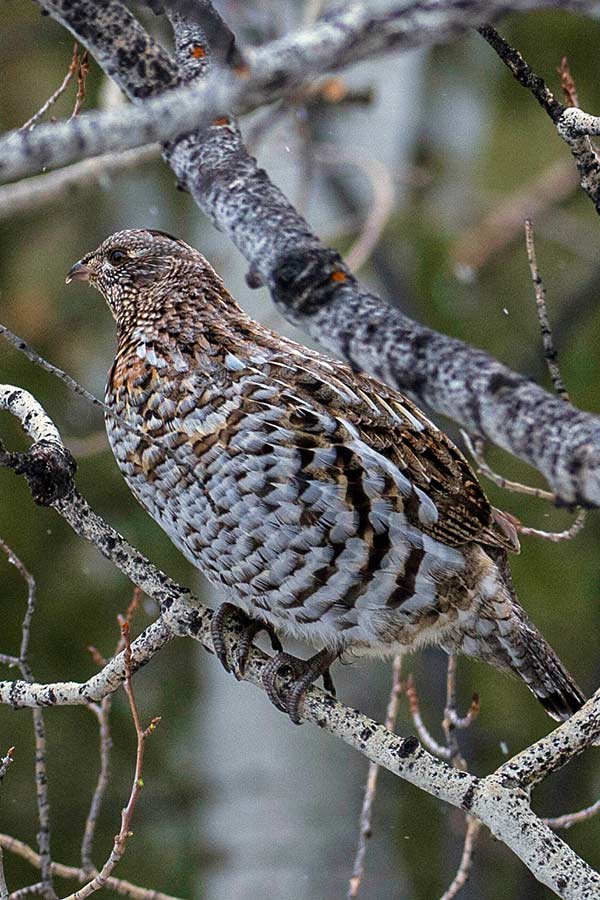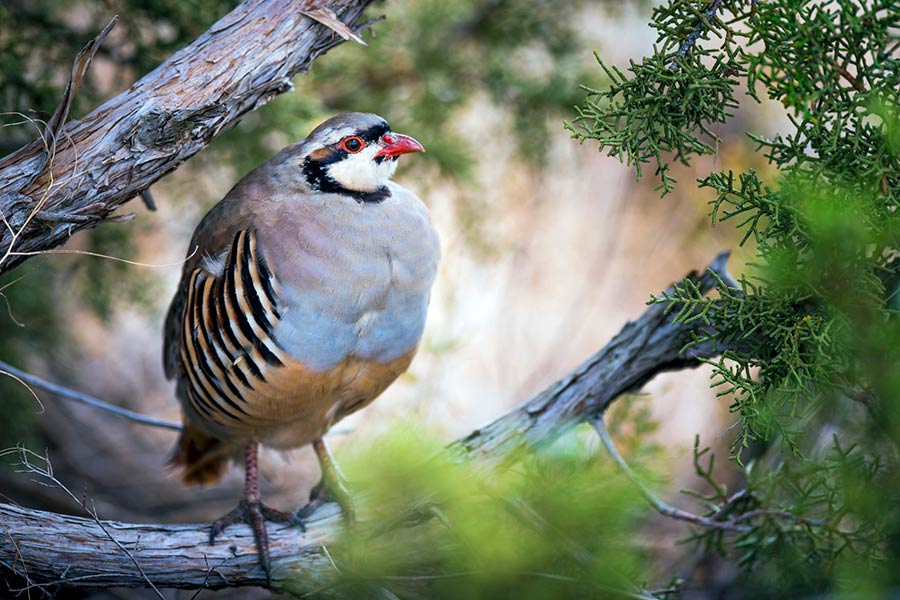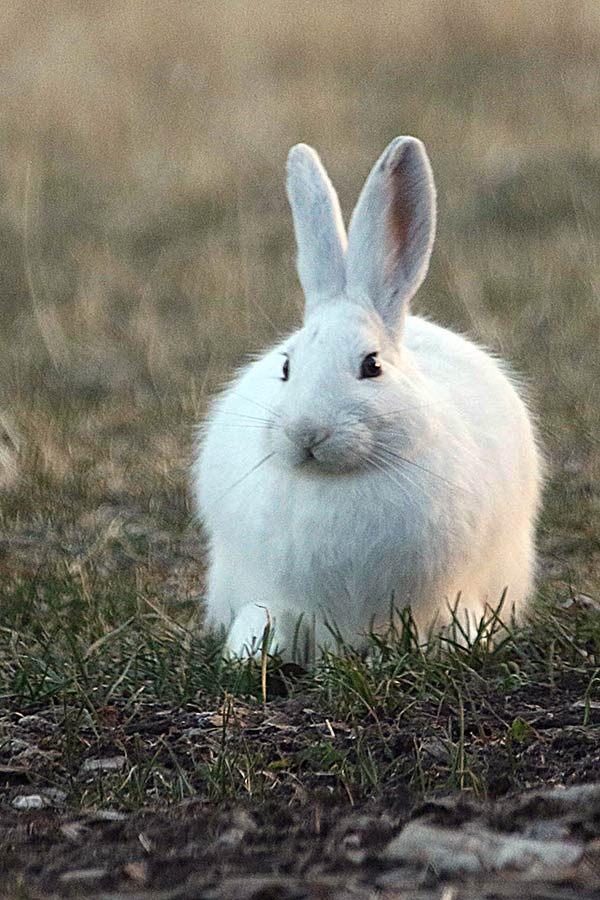What hunters should expect during the Utah upland game hunts this fall; new "Appetizer Slam" announced for Upland Game Slam
Salt Lake City — If you didn't draw out for any of the big game hunts but still want to hunt this fall, you may want to give upland game a try! The majority of the upland game hunts in Utah are free and open to anyone with a Utah hunting license. So whether it's a long-standing family tradition or you just want to harvest a new species like chukar or grouse, here are a few things that will help you have success hunting upland game this fall.
Doves (mourning and white-winged)
There are an estimated 55 million mourning doves across western North America, and the population numbers are similar in Utah to last year.
Mourning doves can be found all across the state, but most of the harvest occurs in Box Elder, Cache and Millard counties. Doves can often be found near agricultural grain fields (especially those with wheat and safflower) because they provide food for doves. Doves also need lots of water throughout the day, so hunting over water sources (including springs in sagebrush rangelands) and near feeding and roosting sites can help hunters find more doves.
If you want to hunt on private land, like on an agricultural field, you must obtain written permission from the landowner in advance.
"Mourning doves are a popular species for young hunters because they are very numerous and provide a lot of shooting opportunities," Blair Stringham, the Utah Division of Wildlife Resources assistant wildlife program chief, said. "This year, I would expect the hunt to be average for most hunters."
White-winged doves are more rare in Utah, but can occasionally be found in the southwestern areas of the state. Hunters should also keep an eye out for white-winged doves in the same areas as mourning doves.
Doves tend to begin migrating south when nighttime temperatures drop into the 50s, so hunters should plan to target them earlier in the season to increase their chances of success.
Because mourning and white-winged doves are migratory birds protected by federal law, you need a Harvest Information Program number to hunt them. Getting a HIP number is easy and only takes a few minutes. You can register for a free HIP number on the DWR website.
The hunting season for mourning and white-winged doves begins Sept. 1 and runs until Oct. 30. For more tips on hunting doves, visit the DWR website.
Band-tailed pigeons
Look for band-tailed pigeons in southern Utah in areas with Gambel oak, aspen and conifers. The Abajo and La Sal mountain ranges are also hot spots for this species.
"Most Utah hunters don't take the time to hunt band-tailed pigeons because they are a fairly secretive bird that is difficult to find," Stringham said. "However, they can be a unique challenge for hunters who are willing to put the time in to find them. It is incredibly rewarding when you find one of these birds and have a successful hunt."
Hunting this species does require a permit, but it's free. This free permit can be obtained on the DWR website. You also need a HIP number to hunt band-tailed pigeons. You can register for a free HIP number on the DWR website.
The pigeon hunting season runs from Sept. 1–14.
Grouse (dusky and ruffed)
There are several grouse species throughout Utah: dusky grouse, ruffed grouse, greater sage-grouse and sharp-tailed grouse. Greater sage-grouse and sharp-tailed grouse require a special permit in addition to a hunting license and the application period for that permit ended July 16. However, dusky and ruffed grouse (species of forest grouse) can still be hunted this fall with just a hunting or combination license.
The dusky grouse and ruffed grouse population numbers are either similar to or higher than last year's numbers in most areas of the state. However, DWR biologists have reported lower numbers in the southeastern part of the state, likely due to drought conditions in the spring and summer.
Dusky grouse, also known as the blue grouse, pine hen, pine grouse and fool hen, are about the size of a chicken and have drab brown and gray coloring. Their tail feathers are black except for the tips, which have a lighter gray color, and look like a wide band when the tail is fanned. Dusky grouse are found in higher elevations along the borders of aspen and conifer forests.
Ruffed grouse, also known as the willow grouse, are gray and red and have a group of black feathers on the sides of their neck. Their tail feathers are the same color as their body, but have a dark black band near the end. Ruffed grouse are found in stands of aspen, particularly young aspen. The aspen stands that also have shrubs with berries and a water source are the best places to spot a ruffed grouse. For more tips on distinguishing between dusky and ruffed grouse, visit this Utah State University Extension link.
During fall and winter, grouse forage on the ground in areas where flowering plants (such as elderberry or serviceberry) or grains are available, and in areas dominated by sagebrush or in trees or shrubs with fruits and buds.
"Hunters who can locate the areas with the most berries should find good concentrations of grouse," DWR Upland Game Coordinator Heather Talley said. "The birds migrate upslope as the season progresses and can be found in high-elevation conifer forest areas by early October."
Hunters should be able to locate grouse in the following areas:
- Central Utah: Nebo and Manti mountain ranges
- Northern Utah: Raft River Mountains
- Southern Utah: Beaver, Fillmore and Fish Lake areas
"People usually hunt grouse with dogs, but you will still want to move slowly and stop routinely to listen for birds so you can see them crouched down as you pass," Talley said. "Sporadically stopping can result in flushing the grouse because they get nervous if you are close to them. And because grouse can escape quickly when they flush, be ready to shoulder your gun for a shot."
If you're able to hunt with a dog, the best time to hunt grouse is an hour or two after sunrise, while the birds have been feeding, so that there will still be scent on the ground for your dog to track. If you hunt grouse without a dog, try early in the morning or late in the afternoon because that is when they're most active because they're feeding, and will be the most visible.
"Since grouse spend most of the day on the ground, you can still find them at any time during the day. This means you can still be successful if you are hunting without a dog between prime feeding times," Talley said.
The dusky and ruffed grouse season runs from Sept. 1 to Dec. 31. For more tips on hunting either species of grouse, visit the DWR website.
Partridge (chukar and gray)
Biologists estimate that chukar populations have slightly increased this year, compared to 2019, in northern and southeastern Utah, but they have decreased in the northeastern and southern parts of the state, due to dry conditions.
Hunters should look for chukars in the following locations:
- Northern Utah: Public lands in the western part of Box Elder County. Pen-reared birds are released each year before the hunt on the Brigham Face, East Canyon and Henefer-Echo wildlife management areas.
- Southern Utah: Mountain ranges in Beaver and Millard counties, the foothills along the west side of the Monroe Mountains, the east sides of the Pahvant and Tushar mountains, the Circleville and Black Canyon areas of Garfield County, and the western side of Washington County.
- Southeastern Utah: Cliff areas along the Price and Green rivers and the face of the Book Cliffs.
- Central Utah: Tooele, Juab and Millard counties generally have the highest chukar concentrations. To find chukars, hunters should target the rocky areas in the deserts west of I-15.
Hunters should focus on steep slopes with rocks and bunch grass, sagebrush or cheatgrass, as well as areas with water. The best time to hunt chukars is early in the morning since that's when they're feeding and when they tend to be vocal, making them the easiest to find.
"If one of the birds sees you while the rest are feeding, it will call out to alert the others, helping you to know where their group is located," Talley said. "You may increase your success rate hunting near water, but chukars aren't completely dependent on water, and rely on it even less later in the year. Once winter hits, hunt the south-facing slopes, where the sun will be melting snow and warming the rocks, making it a good area for chukars."
Gray partridge (also known as Hungarian partridge or Huns) have about the same population numbers as last year. Gray partridge can be found on public lands in the western part of Box Elder County, and on private land in eastern areas of the county, as well as on private property in the western part of Cache County. Don't forget to get written permission from the landowner before entering private property. Hunters should note that there are no populations of gray partridge in the southeastern part of the state.
Both partridge seasons will run from Sept. 26 to Feb. 15, 2021.
Cottontail rabbits and snowshoe hares
Cottontail rabbit population numbers have decreased statewide compared to last year and are still at the low end of their population cycle.
Look for these rabbits in riparian areas (like creek bottoms and washes) with sagebrush and willow trees, and try hunting early in the morning or late in the afternoon, when the rabbits are feeding. Cottontail rabbits can also be found near rocky outcroppings.
"Hunters also often have success finding cottontails in the transition areas between sagebrush and agriculture fields," Talley said.
If multiple hunters walk in a straight line with several yards between them, they're likely to find some rabbits feeding or resting. Be sure to walk slowly and quietly because cottontails have incredible hearing. Be sure to wear hunter orange, since it won't deter the rabbits, and will make it easier for other hunters to spot you.
Small caliber rifles, such as .22 and .17, are great for rabbit hunting, or you can also use shotguns with No. 6 shot. Note that some areas require lead-free ammunition, so be sure to look up restrictions before you head into the field.
Find more cottontail rabbit hunting tips on the DWR website.
Snowshoe hare populations are also low statewide. They can be found in high-elevation forest areas with conifer and aspen trees. The best habitat for hares is typically 8,000–9,000 feet in elevation and is more difficult to access than where cottontails are found.
Hunters should be able to find snowshoe hares in the following areas:
- Southern Utah: Tushar Mountains and on the Monroe and Fish Lake hunting units
- Southeastern Utah: Along the Avintaquin Ridge
While they are a brownish-gray color in the summer, snowshoe hares are completely white in the winter, except for the black tips of their ears. The best strategy for finding hares is to wait for the first snowstorms of the year, and then look for the hare's unique tracks. Their track looks like a miniature snowshoe, hence their name. Snowshoes or snowmobiles are often essential if you want to hunt snowshoe hares after the snow falls.
Snowshoe hares have a limited home range, so if you find an area that has plenty of tracks in it, there's a good chance a hare is hunkered down in some vegetation nearby. Move slowly through their habitat, watching for the outline of a hare and its dark black eyes. Kicking brush piles as you walk can also cause hiding hares to flush into the open.
Small-caliber rifles and shotguns are great firearms to use for hunting hares.
Hunters should also note that rabbit hemorrhagic disease serotype 2 (RHDV-2) has been confirmed in wild rabbit populations in Utah — in cottontail rabbits in the Teasdale area of Wayne County and in the Monticello area of San Juan County.
Infected wild rabbits may be lethargic and not flee when approached. If the rabbit you harvested seemed to act normally at the time of the hunt, it is unlikely that it has the disease. However, if you notice any discoloration or hemorrhages on internal organs after harvesting the rabbit, or if you see anything that appears abnormal or causes concern, please contact your local DWR office and do not consume the rabbit, as a safety precaution.
The cottontail rabbit season runs from Sept. 1 to Feb. 28, 2021. The snowshoe hare season runs from Sept. 1 to March 15, 2021.
Upland Game Slam
To add an extra challenge to your hunts this fall, consider participating in the Upland Game Slam. Similar to the Utah Cutthroat Slam, it encourages hunters to harvest a variety of upland game species, while generating money to help fund a variety of habitat and upland game-related projects.
Hunters complete a slam by harvesting the required amount of the target species. Each slam is designed to give you an extra challenge while you're hunting, as well as the opportunity to earn a commemorative, collectible coin. The entry fee is $20 for hunters 18 years of age or older, or $10 for hunters 17 years of age or younger. Learn more about how to participate in the Upland Game Slam on the DWR website.
A new, eighth slam is being added this year. The "Appetizer Slam" includes some of Utah's smaller game birds, including California quail, Gambel's quail and mourning dove. To complete the slam, hunters must harvest one of each of the three species within a single hunting season.
Check the 2020–21 Upland Game and Turkey Guidebook for details on regulations for hunting each species, including the legal weapons for each upland game species.
Youth hunts
The statewide youth hunt for chukars is Sept. 19–21, and birds will be released just prior to the hunt. There will also be an organized youth chukar hunt held at Hatt's Ranch in Green River on Sept. 19 from 8:15 a.m. to 12 p.m. Register for the hunt and find more details on the DWR Eventbrite page.


